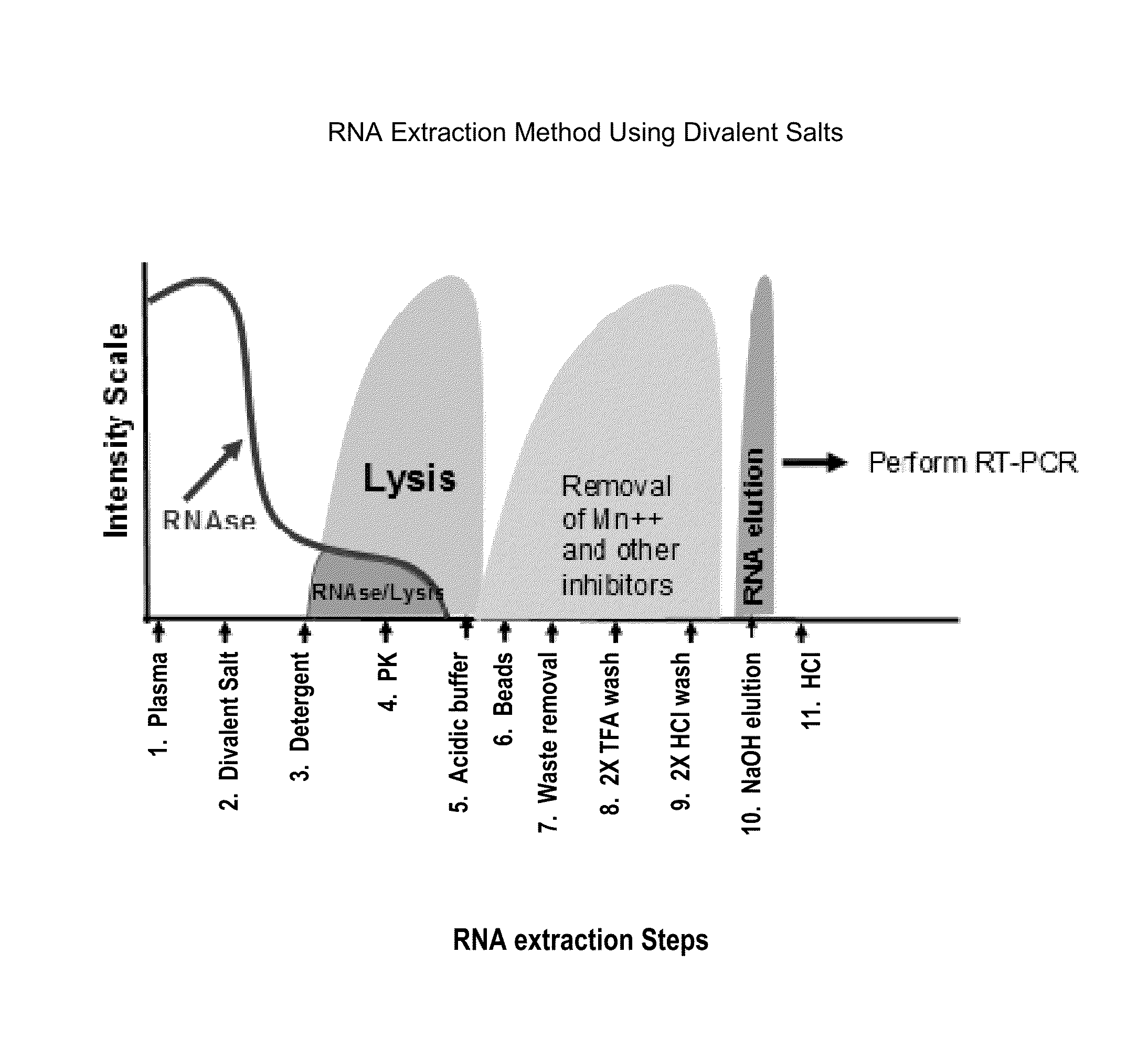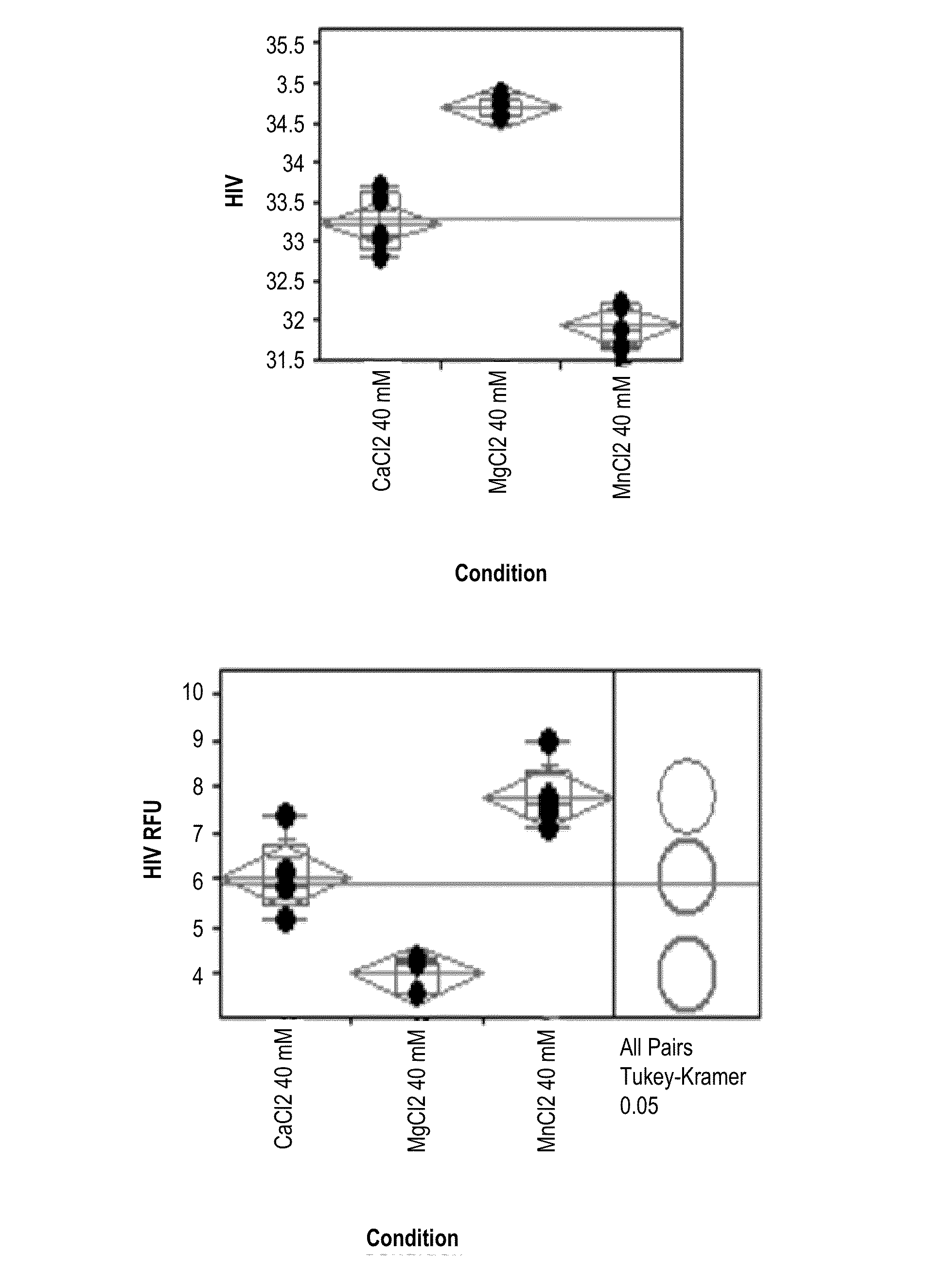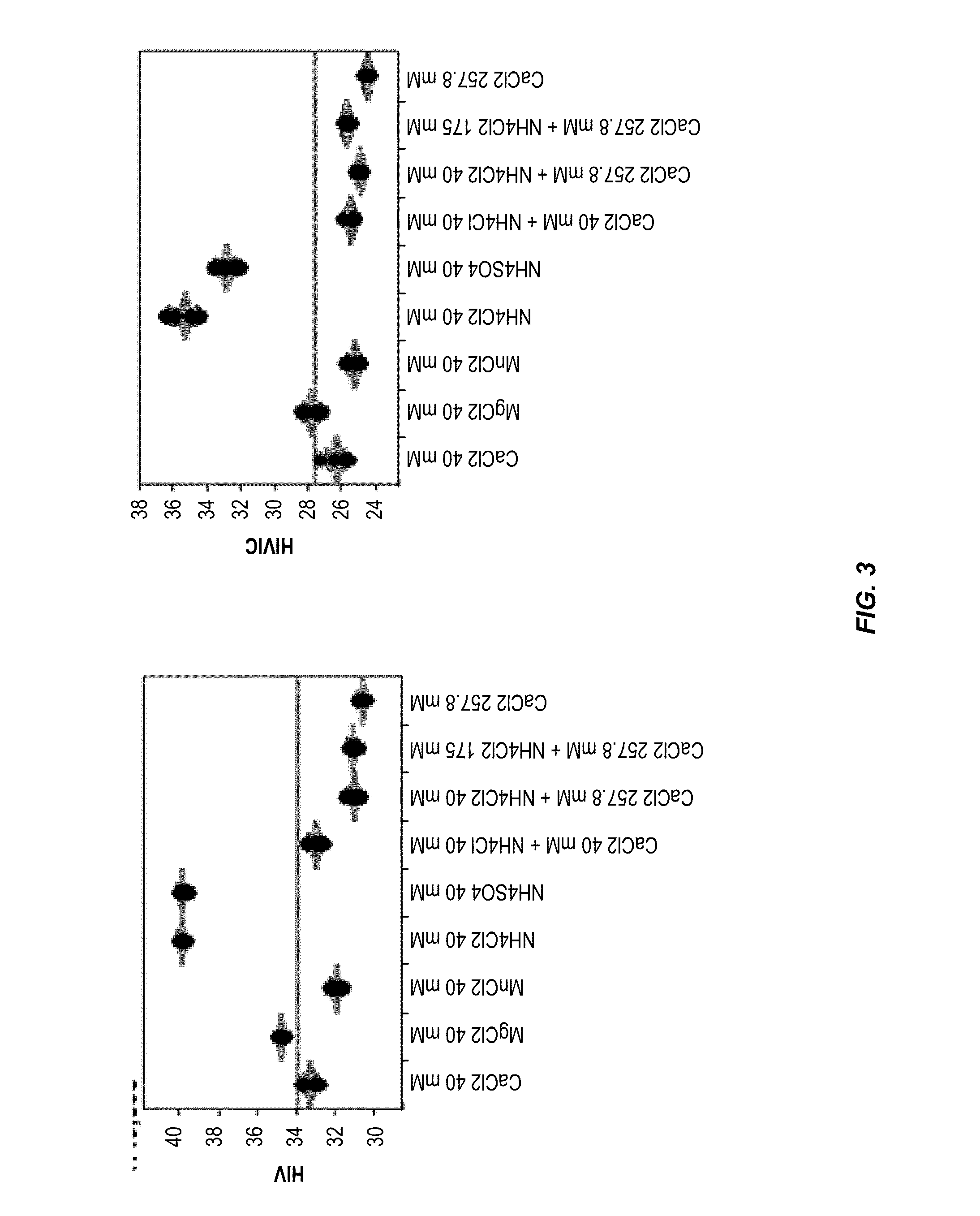USE OF DIVALENT IONS, PROTEASES, DETERGENTS, AND LOW pH IN THE EXTRACTION OF NUCLEIC ACIDS
- Summary
- Abstract
- Description
- Claims
- Application Information
AI Technical Summary
Benefits of technology
Problems solved by technology
Method used
Image
Examples
example 1
RNA Extraction Method Using Divalent Ions and Multivalent Ions
[0103]This example illustrates the methods described herein for extracting RNA from a sample using divalent ions, protease, detergent and low pH. The performance of nucleic acid extraction methods comprising multivalent salts at either low or high equimolar concentrations was evaluated by real-time quantitative PCR. In these studies, mean HIV-1 Ct, mean RFU and / or process control Ct were evaluated for each extraction method tested. A lower mean HIV-1 Ct value and / or a lower process control Ct value correlate to the presence of more extracted HIV-1 RNA.
[0104]The method of extracting RNA from a plasma sample is described herein and presented in FIG. 1. Briefly, K2-plasma samples containing 4,000 copies of HIV-1 per ml and a 1:10,000 dilution of a HIV-1 process control (e.g., Sindbis HIV RNA control) were treated with one of the divalent salt conditions being tested. A process control serves as a positive control of nucleic ...
example 2
Analysis of RNA Integrity During Lysis Steps
[0110]This example illustrates the effect on RNA integrity of HIV-1 genomic RNA during RNA extraction of K2 plasma samples treated with Mn(OAc)2. In the study 20,000 copies of HIV genomic RNA were added at different steps of extraction. RNA integrity was estimated by real-time RT-PCR. The results show that the addition of Mn(OAc)2 to a sample at the start of RNA extraction preserved RNA integrity during prelysis steps (before the addition of Mn(OAc)2 to plasma and after Mn(OAc)2 addition) and lysis steps (addition of detergent such as Triton X-100, protease such as proteinase K, or magnetic bead binding buffer such as citric acid). The addition of genomic RNA prior to Mn(OAc)2 resulted in a 94% loss of RNA, as calculated from a 4 Ct delay (FIG. 6). Yet, the addition after Mn(OAc)2 led to a 82% protection of genomic RNA, as determined by a 2.5-3.5 Ct difference. RNA integrity was highest when the sample was spiked with RNA after the PK, as ...
example 3
Use of Divalent Salts in DNA Extraction
[0111]This example illustrates that transition metal salts are effective for viral DNA extraction of plasma samples spiked with Epstein-Barr virus (EBV). The effect of adding either manganese chloride or magnesium chloride (final concentration or 257 mM) during the initial step of DNA extraction to a plasma sample spiked with Epstein Barr virus (4,000 copies per ml) and a process control was evaluated by real-time quantitative PCR. The data shows that MnCl2 was more effective than MgCl2 for extracting viral DNA, as determined by Ct values for EBV and the process control (EBVIC). FIG. 7 illustrates the quantitative analysis comparing EBV DNA extraction methods with MgCl2 and MnCl2.
PUM
| Property | Measurement | Unit |
|---|---|---|
| Temperature | aaaaa | aaaaa |
| Temperature | aaaaa | aaaaa |
| Temperature | aaaaa | aaaaa |
Abstract
Description
Claims
Application Information
 Login to View More
Login to View More - R&D Engineer
- R&D Manager
- IP Professional
- Industry Leading Data Capabilities
- Powerful AI technology
- Patent DNA Extraction
Browse by: Latest US Patents, China's latest patents, Technical Efficacy Thesaurus, Application Domain, Technology Topic, Popular Technical Reports.
© 2024 PatSnap. All rights reserved.Legal|Privacy policy|Modern Slavery Act Transparency Statement|Sitemap|About US| Contact US: help@patsnap.com










